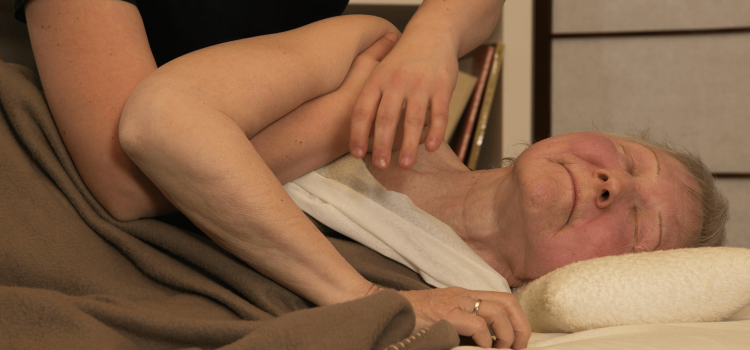
Human movement and its mechanics have inspired countless inventions aimed at making life easier for human beings. Paradoxically, however, these inventions have confined us to immobility, at times turning us into robots that repeat the same movements hundreds or even thousands of times per day. Sedentariness is our number one enemy, as human beings are designed to move. The over-use of muscles and joints gives rise to tension, pain and stiffness. Kinesitherapy strives to restore movement through the use of simple and effective tools: massage coupled with passive or active mobilizations, or mobilizations against resistance.
History
Kinesitherapy is difficult to define. Its meaning differs from one country to the next. In France, for example, kinesitherapy is more akin to physiology in that its practice involves the use of tools and machines. In Québec, kinesitherapy is a massage therapy technique in the sense that it is practiced solely with the hands and the body. As an approach, kinesitherapy requires Swedish massage technique as a prerequisite.
Applications and Effects
Kinesitherapy is a massage- and movement-based therapy. Swedish massage forms the basis of this bodily approach. Through its effects on the various systems in the human body, massage relaxes and tones the muscles and activates circulation, depending on the techniques used.
Well executed mobilizations are the kinesitherapist’s essential tools. Life is movement, and restoring an optimal range of movement goes a long way towards achieving greater client satisfaction.
Much like a blacksmith heats a piece of metal in order to shape it, the kinesitherapist warms the skin and muscles in order to soften them. This preparation lets the kinesitherapist better move the segments in every possible direction with no active participation from the client, which is referred to as passive mobilization.
Indications and Contraindications
Kinesitherapy is not a cure, but rather a tool that allows the body to recalibrate and promote its own recovery. When a muscle permits the full range of movement with no pain, the entire organism is stimulated in all its functions, be they articular, organic or intellectual, to name just a few.
The kinesitherapist focuses on chronic pain in the musculoskeletal system and does not intervene in the presence of an inflammatory condition. Manipulation is not part of the kinesitherapist’s repertoire, as this act is reserved for chiropractors and certain medical specialists.
Kinesitherapy is therefore distinguished from other bodily approaches recognized in the medical field through the integration of massage techniques associated with mobilizations.
Contraindications are the same as for other techniques, such as fever and inflammation. Secure the approval of your doctor before scheduling a post-operative appointment with a kinesitherapist.
Conduct of a Session
The first session begins with a health questionnaire followed by a posture and mobility assessment, a palpatory examination, muscle testing and certain specific tests. These preliminary steps allow the therapist to safely work with the client.
In cases involving a specific problem or pain, the therapist uses tests in order to determine whether kinesitherapy is advisable or whether the client should be referred to another health professional. The kinesitherapist does not offer a diagnosis, but simply ensures that his or her intervention will benefit the client and will not pose a danger.
Once the various assessments are complete, the session begins with a massage of the various structures based on the desired outcome. The work can be done on the skin, muscles, tendons and ligaments in order to help the client regain an optimal range of movement. It would be unthinkable to perform mobilizations without first performing a preparatory massage.
Passive mobilizations help restore freedom of movement without pain. They are relatively easy to perform, even though their effectiveness depends on a high level of precision and an in-depth knowledge of the human body. Where required, exercises – that’s to say active mobilizations with participation from the client, or resistance-based mobilizations performed with weights – are suggested for purposes of prevention and treatment follow-up. The client’s autonomy remains the ultimate objective.
Kinesitherapy sessions may vary in frequency. One consultation per week over a five- to six-week period is usually enough to see significant improvement. Kinesitherapy is extremely effective for pain caused by muscle tension and joint stiffness due to physical inactivity, biomechanical stress or joint degeneration.
To learn more about kinesitherapy (in French):
Les techniques biomécaniques dans le traitement des pathologies articulaires

